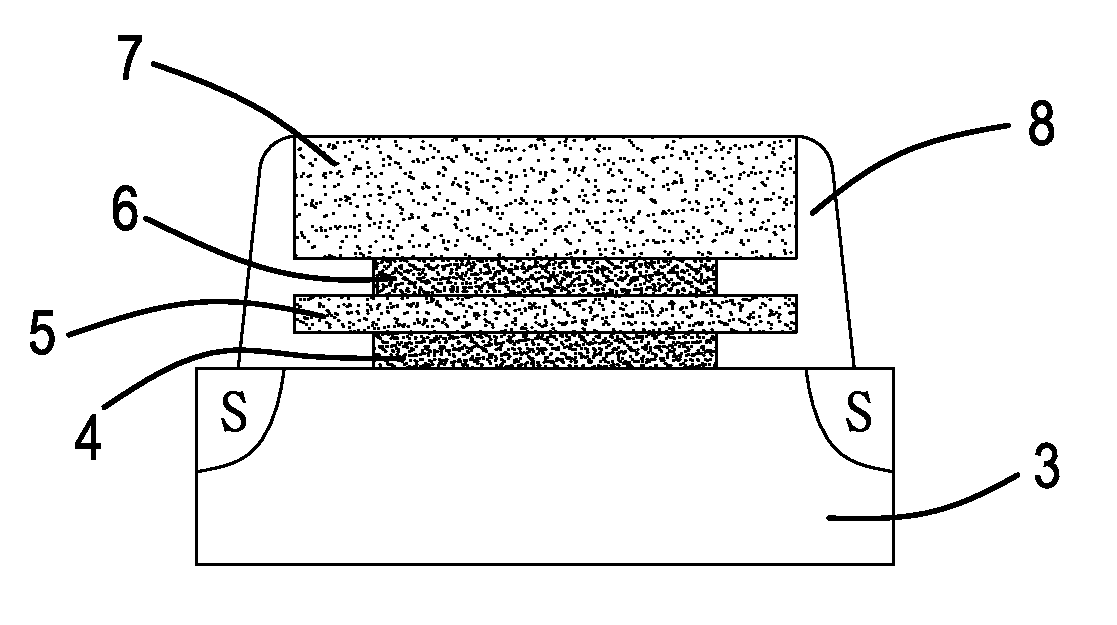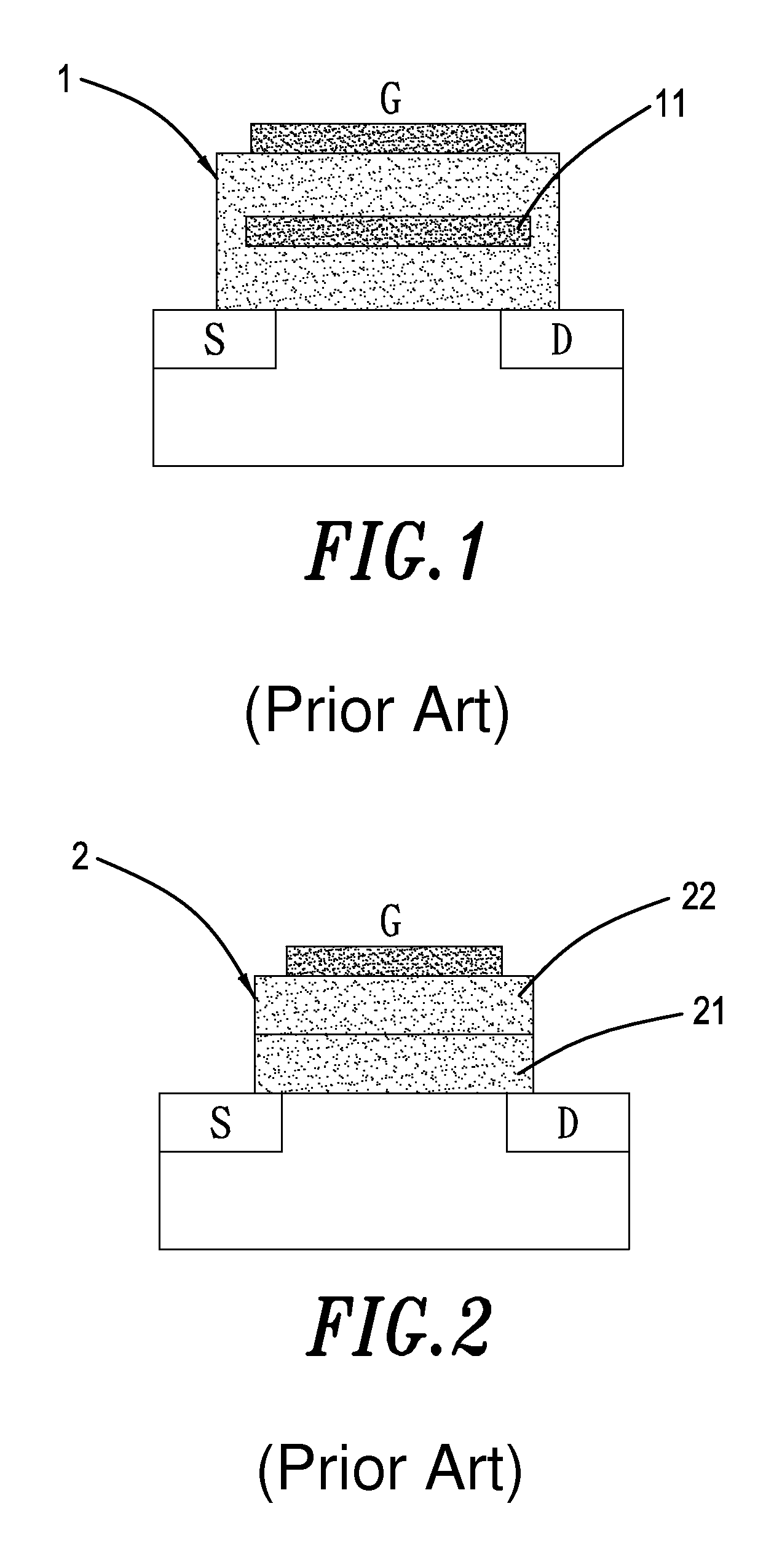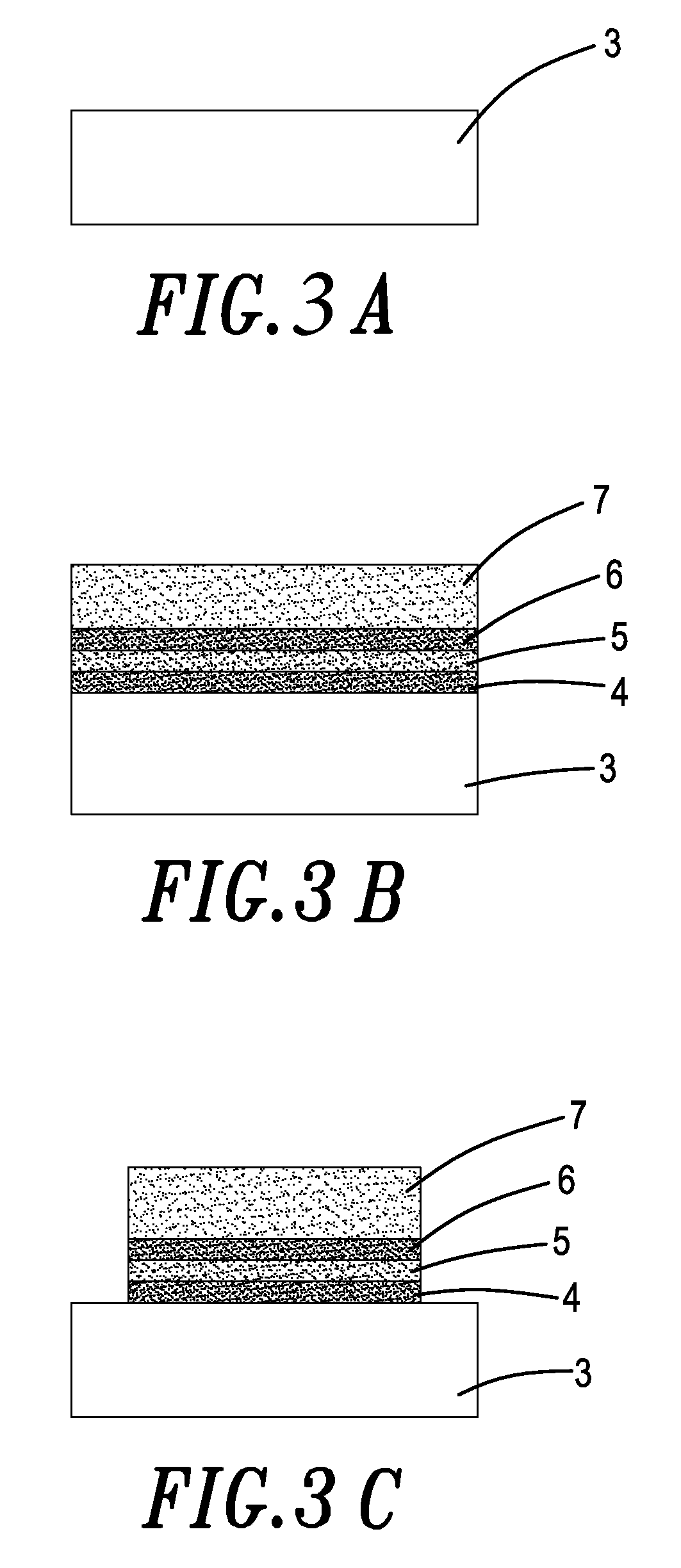Process for fabricating non-volatile memory by tilt-angle ion implantation
a technology of non-volatile memory and ion implantation, which is applied in the direction of basic electric elements, electrical apparatus, semiconductor devices, etc., can solve the problems of loss of electrons stored, substantial economic benefit, and increase in production costs, and achieve the effect of lowering production costs
- Summary
- Abstract
- Description
- Claims
- Application Information
AI Technical Summary
Benefits of technology
Problems solved by technology
Method used
Image
Examples
Embodiment Construction
[0018]Referring to FIGS. 3A–3F, a process for fabricating non-volatile memory by tilt-angle ion implantation according to the invention comprises the steps of:
[0019]step 1: providing a wafer substrate 3 (FIG. 3A);
[0020]step 2: depositing over the wafer substrate 3 successively a first oxide layer 4, nitride layer 5, an upper second oxide layer 6, and a gate 7, in a manner that a gate dielectric layer (oxide-nitride-oxide (ONO)) is formed over the wafer substrate 3 (FIG. 3B), wherein said nitride layer 5 can store two bits at the same time; said first and second oxide layers 4, 6 may be silicon oxide; said gate layer 7 is a polysilicon layer; and said nitride layer 5 is silicon nitride;
[0021]step 3: forming gate pattern by photoresist developing, and removing both ends of the gate dielectric layer by directional etching to expose said first oxide layer or said substrate (FIG. 3C);
[0022]Step 4: removing the photoresist and using tilt-angle ion implantation to implant within said nitri...
PUM
| Property | Measurement | Unit |
|---|---|---|
| incident angle | aaaaa | aaaaa |
| incident angle | aaaaa | aaaaa |
| tilt angle | aaaaa | aaaaa |
Abstract
Description
Claims
Application Information
 Login to View More
Login to View More - R&D
- Intellectual Property
- Life Sciences
- Materials
- Tech Scout
- Unparalleled Data Quality
- Higher Quality Content
- 60% Fewer Hallucinations
Browse by: Latest US Patents, China's latest patents, Technical Efficacy Thesaurus, Application Domain, Technology Topic, Popular Technical Reports.
© 2025 PatSnap. All rights reserved.Legal|Privacy policy|Modern Slavery Act Transparency Statement|Sitemap|About US| Contact US: help@patsnap.com



